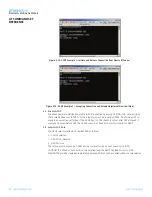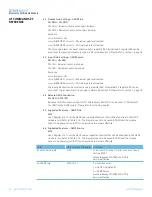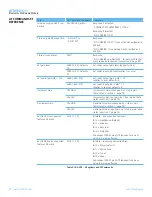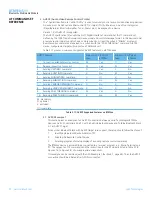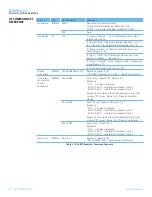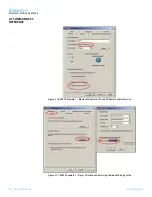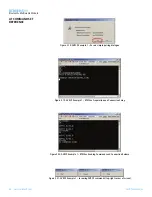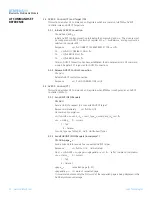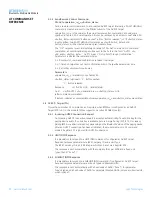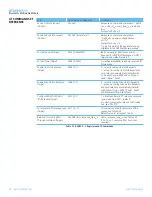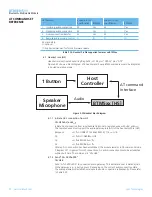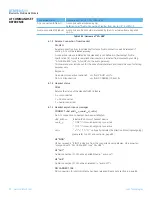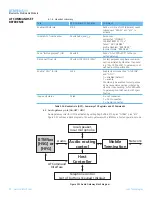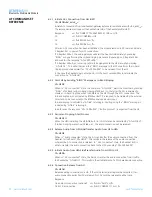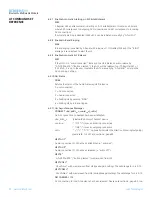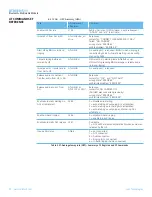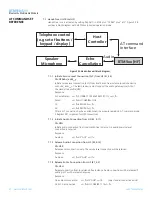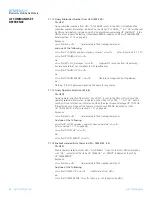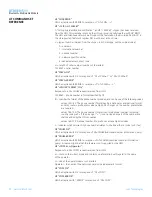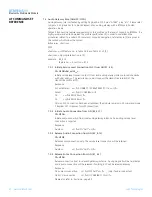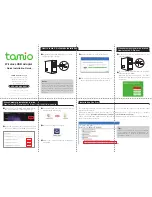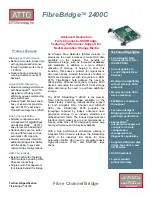
53
www.lairdtech.com
Laird Technologies
BTM510/511
Bluetooth
®
Multimedia Module
Message
Comment
AVSR <n>,<page
dec
>,<pagedata
hex
>
Response to AT+AVS (SUBUNIT INFO Request), Indi
-
cates completion of command
<n> = status
dec
: 0 – success
1 – fail
4 – timeout
<page
dec
> : requested page [0..31]
<pagedata
hex
> : 1st word of requested page
AVPTI <subunit_id
hex
>,<operation_id
hex
>,<state>
Indication of incoming Pass Through command
<subunit_id
hex
>: subunit id
<operation_id
hex
>: see Table 3.20
<state>: ‘0’ – Button pushed
‘1’ – Button released
AVPTC <n>,<operation_id
hex
>,<state>
Confirmation of AT+AVC (Control Command
Request)
<n>: ‘0’ – successful
‘1’ – timeout
‘2’ – not successful, other than timeout
Table 3.23: AVRCP Unsolicited Messages
5.5 AVRCP GPIO Mapping
GPIOs can be mapped to AVRCP Commands (operations) with GPIO Configuration Registers S 651
to 663. If Function mapping is enabled (FME=1), and if a valid av_operation_id (see Table 3.20) is
assigned to a GPIO and if the module is configured as AVRCP Control (S 301), a rising edge
causes the appropriate command request to be sent to the connected AVRCP target as if AT+AVC
was issued with <state>=0 (Button pushed). A trailing edge on this GPIO will cause the same
command to be sent with <state>=1 (Button released).
The logical level of a GPIO can be inverted by setting the appropriate flag “INV” in the appropriate
GPIO configuration register.
If configured as AVRCP Target, the direction flag (DIR) in the GPIO Configuration Register must be
set to 1 in order to indicate received commands at a digital output. A write operation to a GPIO
will not have any effect if that GPIO is mapped to AVRCP.
The level inversion Flag INV of the GPIO Configuration Register also applies in target mode.
Restrictions can apply if certain GPIOS will be reserved for other functions in future, e.g.
coexistence supporting functionality.
Please refer to section Error! Reference source not found.
6. HSP (Headset Profile)
The “Headset Profile” provides full-duplex audio capability combined with minimal device control
commands. Audio bandwidth is limited and deemed to be sufficient for, e.g., voice links. Table 3.24
lists the feature requirements of the HSP specification [4] and the level of support by BTM5xx.
Version 1.2 of the Headset Profile specification is supported.
In most cases it will be preferred to use the more advanced Hands-Free Profile (HFP).
HSP defines the role of the headset (HS) and the role of the audio gateway (AG) which are both
supported on BTM5xx. They are enabled by setting the appropriate flag in S-Register 102 (plus
subsequent “AT&W” and “atz“).
An HSP connection can be in one of two states: ACL connected or audio connected. The ACL is initiated
by either HS or AG. The audio connection (a SCO link) shall always be initiated and released by the AG.
A host processor is required, using AT commands to control the BTM5xx module (hosted operation mode).
An AT command beginning with AT+HS... indicates affiliation to the Headset role of HSP.
An AT command beginning with AT+HSG…indicates affiliation to the Audio Gateway role of HSP.
AT COMMAND SET
REFERENCE

